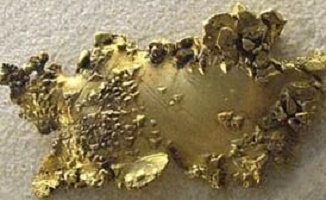pH definition meaurement scale and chart Chemistry
pH Definition Meaurement Scale and Chart
The pH (Potential of Hydrogen) is the measure of the activity of hydrogen ions in solutions . It is the measure of the acidity of a solution. It is defined as the negative logarithm of the activity of hydrogen ions:
where a H + is the activity of the hydrogen ion expressed in molality (moles of solute per kilograms of solvent). The activity is the tendency of a solution to supply or provide hydrogen ions [H + ] and is proportional to the concentration thereof. It is affected by:
- the solvent, which is usually water.
- The temperature: although the concentration of [H + ] does not vary, the activity varies with changes in temperature.
- The presence of other ions in the solution: this is due to the potential interaction of other ions with the hydrogen ion.
Definition of Potential of Hydrogen according to IUPAC
The International Union of Pure and Applied Chemistry (IUPAC) defines pH as the reading given by a Potential of Hydrogen meter that is calibrated or adjusted with solutions with a fixed known pH . The IUPAC is the international organization in charge of the standardization of chemical standards and to establish the conventions in chemistry.
Potential of Hydrogen scale

The pH scale was developed by the Danish Sørensen in 1909. The pH scale is a way to determine the acidity or alkalinity of a substance. Values range from 0 to 14, where pH equals 7 is neutral, below 7 is acid and above 7 is basic.
The following table shows the pH of known substances:
| Substance | pH |
|---|---|
| Oven cleaner | 13.8 |
| Hair remover | 12.8 |
| Ammoniacal degreaser | 11.0 |
| Milk of magnesia | 10.5 |
| Bleach or chlorine | 9.5 |
| Seawater | 8.0 |
| Human blood | 7.3 |
| Pure water | 7.0 |
| Milk | 6.5 |
| Black coffee | 5.5 |
| Soft drinks | 3.5 |
| Vinegar | 2.8 |
| Lemon juice | 2,3 |
| Automobile battery acid | 0.8 |
Original pH concept and currently
The concept of Potential of Hydrogen was defined by SPL Sørensen (1868-1939) in 1909 as the negative logarithm of the hydrogen ion concentration:
where [H + ] is the concentration of hydrogen ions in moles per liter. At the time, there was no knowledge of the concept of activity. However, Sørensen noticed the mistake later and tried to amend it. However, the original conception of Potential of Hydrogen was maintained for many years.
In 2002 IUPAC recommended the current definitions of Potential of Hydrogen measurement based on the Bates-Guggenheim convention.
How is the pH measured?
The pH meter (called the peachimeter) is an electronic instrument used to measure Potential of Hydrogen. It consists of an electrode that contains a known acidic solution enclosed in a special glass membrane.

The Potential of Hydrogen of an aqueous solution is measured more precisely via the Potential of Hydrogenmeter electrode.
Indicators are another qualitative way to measure Potential of Hydrogen. An indicator is a substance that shows a visual change when it is at different Potential of Hydrogen. For example, litmus paper is red at Potential of Hydrogen less than 5 (acid) and blue at Potential of Hydrogen greater than 8 (base).
Importance of pH measurement
In the area of biochemistry, pH measurement is very important, since many enzymes and other proteins have an optimum Potential of Hydrogen for their activity . In cell cultures, the medium in which the cells grow must maintain a narrow Potential of Hydrogen range, otherwise the cells die.
In the food industry, Potential of Hydrogen is measured to prevent the growth of pathogenic organisms . In other cases, such as in the manufacture of yoghurts or alcoholic beverages, thePotential of Hydrogen value at which bacteria or yeasts produce the respective fermentations is critical.
In agriculture, the Potential of Hydrogen measurement of the soil determines what type of plants can be grown. For example, the optimal growth range of most plants is between 6.5 and 7.5. In acid soils (pH below 5.5), rice, potato, mango and some herbs progress better.
- The pH is the measure of the acidity of a solution.
- The pH decreases when the acidity increases.
- The pH decreases by one unit for each 10-fold increase in H + activity .
(pH definition meaurement scale and chart)



